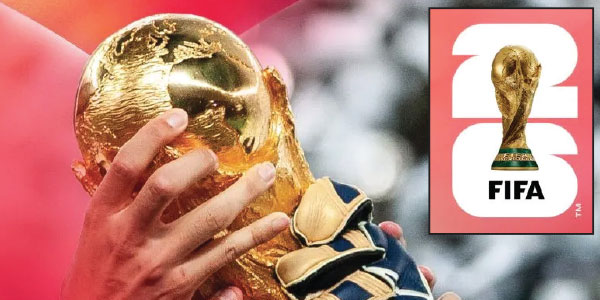
La historia de la imagen, la narración y la piadosa devoción de Nuestra Señora de Guadalupe (NSG) sigue un importante camino a través de cinco siglos de historia mexicana, un período que atravesó un profundo cambio sociopolítico y cultural.
La profecía de su aparición y sus consecuencias son tan importantes que se pueden afirmar en los estudios de Guadalupe como un subtema dentro del estudio académico de la historia mexicana. En otras palabras, el tema requiere una investigación cuidadosa demostrado mediante los textos académicos actuales, como el texto Mexican Phoenix escrito por David Brading profesor de Historia Mexicana en Cambridge.
Según Brading, la tradición real que rodeaba a Guadalupe creció cuando en 1663, el capítulo catedralicio de México solicitaron al papa Alejandro VII que cambiara la fiesta de NSG del 8 de septiembre al 12 de diciembre. Con falta de documentos, el grupo le pidió al Canon Francisco de Siles y al Dr. Antonio de Gama “obtener declaraciones notariadas y juradas por testigos”, indica Brading. “El efecto que se buscaba tener de estos testimonios era comprobar la existencia de una tradición relacionada con la Virgen de Guadalupe, que ha sido transmitida a través de generaciones, la cual floreció mucho antes de que Sánchez escribiera su libro”.
Brading explica que los testigos confiaron en la tradición oral más que en la documentación escrita que rodea el evento. La tradición oral tiene un precedente en la tradición cristiana, aunque los de una mentalidad histórico crítica pueden estar menos inclinados a aceptarla.
Un estudio crítico sobre NSG se produjo en 1794 cuando Juan Bautista Muñoz presentó su memorial a la Real Academia de la Historia. “Además de ciertos anacronismos, esencialmente se basó en el criterio del silencio para descartar las tradiciones como una fábula”, indica Brading.
Brading también dice que Muñoz pudo haber pensado que los nativos crearon la aparición mientras bebían de manera excesiva hasta causar visiones. “Sin embargo, en ningún momento, Muñoz proporcionó alguna evidencia para justificar estas ofensivas especulaciones”, explica Brading, “ Y ni siquiera explicó cómo tales delirios podrían haber sido tomados en serio por el clérigo criollo. Evidentemente era un principio de la Ilustración que la religión popular fuera intrínsecamente politeísta y supersticiosa “.
Muñoz recibió una refutación del Dr. José Miguel Guridi y Alcocer en su Apologia (1820), en la que rechazó el criterio de silencio de Muñoz.
“Tenía que ser recordado, insistió que si Zumárraga o los primeros mendicantes hubieran escrito sobre las apariciones de la Virgen, no habrían creído en España, inclusive entonces así era el prejuicio contra los indios”.
Además, Brading dice que Guiridi y Alcocer hablaban de la imagen misma, de su origen divino, de su devoción, de su preservación y cura y de la repentina conversión de tantos mexicanos.
En la tercera y última parte, desviaremos nuestra atención hacia la imagen misma, su análisis y si Juan Diego existió o no.
_________________________________________________________________________________________________________
Our Lady of Guadalupe: Myth or Fact II
By Nicholas Peterson
The history of the image, narrative, and pious devotion of Our Lady of Guadalupe (OLG) follows a nuanced path through five centuries of Mexican history, a period that saw profound sociopolitical and cultural change.
The professed apparition and its aftermath is so nuanced that one can safely posit Guadalupe studies as a subfield within the academic study of Mexican history. In other words, the subject requires careful research as current academic texts exemplify such as Mexican Phoenix by Cambridge Professor of Mexican History David Brading.
According to Brading, the textual tradition surrounding Guadalupe grew when, in 1663, the cathedral chapter of Mexico, et al., petitioned Pope Alexander VII to transfer OLG’s feast day from September 8 to December 12. With a lack of documentation, the group asked Canon Francisco de Siles and Dr. Antonio de Gama “to obtain notarized, sworn statements from witnesses,” Brading says. “The effect of these testimonies was thus to establish the existence of a tradition concerning the Guadalupe passed down across the generations, which flourished well before Sánchez wrote his book.”
Brading explains that witnesses relied on oral tradition rather than written documentation surrounding the event. Oral tradition has a precedent in Christian tradition, albeit those of a historical-critical mentality may be less inclined to accept it.
One critical study on OLG came in 1794 when Juan Bautista Muñoz presented his Memorial, the Royal Academy of History. “Apart from certain anachronisms, he essentially relied on the criterion of silence to dismiss the traditions as a fable,” Brading says.
Brading also says that Muñoz may have thought that the natives created the apparition while drinking heavily to cause visions. “At no point, however, did Muñoz provide any evidence to justify these offensive speculations,” Brading explains, “and still less did he explain how such ravings could have been taken seriously by the creole clergy. It was of course an Enlightenment principle that popular religion was inherently polytheistic and superstitious.”
Muñoz received a rebuttal by Dr. José Miguel Guridi y Alcocer in his Apologia (1820), wherein he rejected Muñoz criterion of silence.
“It had to be remembered, he insisted, that had Zumárraga or the early mendicants written about the Virgin’s apparitions, they would not have been believed in Spain, such then was the prejudice against the Indians.”
Also, Brading says Guiridi y Alcocer spoke about the image itself, its divine origin, its devotion, its preservation and cures, and the sudden conversion of so many native Mexicans.
In the third, and final, part, we will shift our attention to the image itself, its analysis, and whether or not Juan Diego existed.










